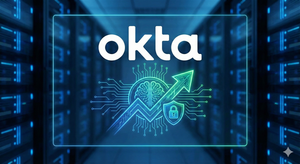(BPT) - According to the Bank of America 2025 Workplace Benefits Report, today's workforce is looking for benefits that address immediate financial challenges, like emergency savings and debt support, while helping them save for the future, too.
Employees say the financial resources they value most offer real-time learning and navigation tools. At the top of the list: retirement education, guidance on creating income in retirement, and tools to build healthy financial habits.
"Employees may have more resources available than they realize and too often they leave valuable tools on the table," said Lorna Sabbia, Head of Workplace Benefits at Bank of America. "Taking advantage of benefits can make a big difference in building both short-term stability and long-term financial confidence."
A Shifting Benefits Landscape
Though employees say retirement education and planning remain a top priority, they're growing more interested in other resources.
This includes tools to build healthy financial habits, online trackers to measure progress and support with other big goals like emergency savings, budgeting and debt, mortgages or college costs - resources that go beyond day-to-day money management. Since 2023, the percentage of workers asking for help with near-term financial needs like emergency savings or college costs has doubled, rising from 13% to 26%.
Employers are responding by offering more services like debt counseling, emergency savings programs and tools to help workers manage competing priorities. However, only 46% of all employers provide comprehensive financial wellness programs, leaving many employees without the guidance they seek.
3 Ways for Employees to Maximize Workplace Benefits
Employees should take a closer look at their workplace resources and consider how they might support their broader financial goals. Here are three key tips:
1. Do your homework on available resources
Many employees do not realize the range of resources their workplace already provides. Beyond retirement accounts, employers may offer investing education, professional financial advice, debt counseling or even peer mentoring programs. These tools can help employees build lasting financial skills and make better-informed decisions. Workers who take time to explore what's available are more likely to feel confident about their financial direction.
2. Take full advantage of retirement benefits
Retirement remains a top priority, with seven in 10 employees calling it a top financial goal. Yet nearly half wish they had started saving earlier. By investing in a company-sponsored 401(k) early, employees can begin setting aside money in every paycheck from the start of their career. Many employers also offer matching contributions, often described as "free money" toward retirement. More than 35% of employees say they regret not taking advantage of this match program earlier in their careers.
3. Plan for hidden costs down the road
However, retirement planning is about more than contributing to a 401(k). Health care expenses, in particular, are a looming cost that many employees underestimate. Almost 40% of employees aren't actively saving for future health care costs at all. Health savings accounts (HSAs) can play an important role, offering potential tax advantages1 that help employees save more efficiently over time. College savings for children or grandchildren is another area often overlooked. Building these expenses into long-term planning helps reduce surprise costs later in life.
3 Ways for Employers to Support Employees' Financial Wellness

Employers can play a role in helping workers secure their financial futures. Financial wellness programs are linked to higher job satisfaction, stronger retention and better productivity.2 More than eight in 10 employers now say these resources are a key factor in staying competitive in the job market. Here are three suggestions:
1. Adopt technology to simplify saving
Automation helps employees get started. Auto-enrollment in retirement plans ensures workers begin saving earlier, while auto-escalation increases contributions over time. Online calculators and budgeting tools give employees a clearer picture of their financial progress and make planning less intimidating.
2. Make retirement planning and saving a priority
Encouraging employees to save early for retirement can help them pursue their goals - even if retirement is far away. Company-sponsored 401(k) plans allow workers to contribute automatically through payroll deductions. It's also important to communicate any retirement benefits clearly and frequently, so employees know what is available to them.
3. Improve education on health care costs
Health care is one of the biggest gaps in retirement planning. Only 21% of employees are currently using their health savings account to save for future health care. Employers can close this gap by improving communication about health savings accounts and how Medicare fits into retirement planning. Clear guidance helps employees prepare for expenses they may otherwise overlook.
Taking the Next Step
For employees, the most important step is starting the conversation. Human resources departments and benefits managers can clarify what programs are available and how to use them. In many cases, workers may find that their employer already offers the very tools they want but might not be aware of.
For employers, the next step is to communicate offerings clearly, make benefits easy to access and be responsive to what workers actually need. That can mean automatically enrolling employees in 401(k) plans, analyzing which benefits are being used most and regularly surveying employees to identify priorities for future offerings. These actions help make sure resources are not just available but are actively supporting broader financial wellness.
In addition to workplace programs, free online resources like Better Money Habits can provide practical financial planning guidance. From budgeting tips to retirement calculators, these tools can help employees set priorities and track progress. The key is not waiting until financial stress becomes overwhelming.
"Whether it is saving for retirement, paying off debt or planning for health care, the decisions employees make today can shape their financial future for decades," said Sabbia. "By taking full advantage of workplace benefits, employees can create a more secure path forward and reduce the stress of navigating savings and spending on their own."
1You can receive federal income tax-free distributions from your HSA to pay or be reimbursed for qualified medical expenses you incur after you establish the HSA. If you receive distributions for other reasons, the amount you withdraw will be subject to income tax and may be subject to an additional 20% tax, unless an exception applies. Any interest or earnings on the assets in the account are federal income tax-free. You may be able to claim a tax deduction for contributions you, or someone other than your employer, make to your HSA directly (not through payroll deductions). In addition, HSA contributions may reduce your state income taxes in certain states.
Certain limits may apply to employees who are considered highly compensated key employees. Bank of America recommends you contact qualified tax or legal counsel before establishing an HSA.
2 McKinsey Health Institute Report, "Thriving workplaces: How employers can improve productivity and change lives," January 16, 2025.
All data included is from the Bank of America 2025 Workplace Benefits Report, unless otherwise noted.
Workplace Benefits Report Methodology
Escalent surveyed a national sample of 962 employees who are working full-time and participate in 401(k) plans, and 800 employers who offer both a 401(k) plan and have sole or shared responsibility for decisions made in the plan. The survey was conducted between December 2, 2024, and January 13, 2025. After the original research was complete, we complemented our annual study with an employee-focused supplemental survey conducted between April 10 and May 1, 2025. This survey consisted of 508 employees working full-time and participating in 401(k) plans. The mid-year touchpoint allowed us to better measure the direct impact of current market conditions on employee feelings of financial wellness. To qualify for the survey, employees had to be current participants of a 401(k) plan and employers had to offer a 401(k) plan option. Neither was required to work with Bank of America. Bank of America was not identified as the sponsor of the study.
Bank of America, its affiliates, and financial advisors do not provide legal, tax, or accounting advice. You should consult your legal and/or tax advisors before making any financial decisions.
Investing involves risk, including the possible loss of principal.
Workplace Benefits is the institutional retirement and benefits business of Bank of America Corporation ("BofA Corp.") operating under the name "Bank of America." Investment advisory and brokerage services are provided by wholly owned non-bank affiliates of BofA Corp., including Merrill Lynch, Pierce, Fenner & Smith Incorporated (also referred to as "MLPF&S" or "Merrill"), a dually registered broker-dealer and investment adviser and Member SIPC. Banking activities may be performed by wholly owned banking affiliates of BofA Corp., including Bank of America, N.A., Member FDIC.
Investment products:
Are Not FDIC Insured | Are Not Bank Guaranteed | May Lose Value |
© 2025 Bank of America Corporation. All rights reserved. MAP #8385440





